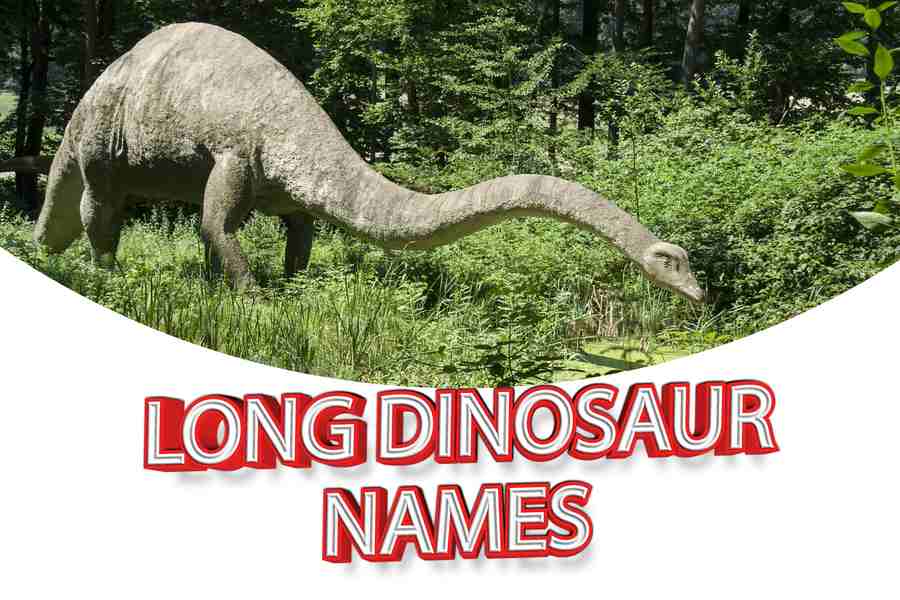45 Long Dinosaur Names: A Comprehensive Guide
Share
Dinosaurs have always captivated our imagination, with their colossal size, diverse features, and mysterious past. Among the many fascinating aspects of these ancient creatures are their intriguing and often long names. This article delves into the history, anatomy, and significance of these long dinosaur names, showcasing 200 examples along the way. By exploring these names, we aim to shed light on the incredible world of dinosaurs and spark curiosity in readers.
History Of Dinosaur Naming
The practice of naming dinosaurs began with the early paleontologists, who discovered and described these prehistoric creatures. As more fossils were unearthed, a complex naming system emerged, primarily based on the creatures’ physical characteristics and the locations where they were found. Over time, this system has evolved to reflect advances in our understanding of dinosaur taxonomy and biology.
Anatomy Of Long Dinosaur Names
Dinosaur names often have Greek and Latin roots, with some incorporating words from other languages or honoring the people who discovered them. These names typically consist of two parts: the genus, which is a broader classification, and the species, which refers to a specific type within the genus. Descriptive elements are often included in the names to highlight unique characteristics, such as size, shape, or ornamentation.
Decoding The Meanings Of Long Dinosaur Names
Here are some examples of long dinosaur names, along with the meanings behind them:
1. Tyrannosaurus rex
One of the most famous dinosaurs, T. rex was a large carnivorous dinosaur that lived during the Late Cretaceous period.
2. Velociraptor mongoliensis
A small, agile predator from the Late Cretaceous period, known for its sickle-shaped claws.
3. Brachiosaurus altithorax
A massive sauropod with long forelimbs and a long neck, living during the Late Jurassic period.
4. Stegosaurus stenops
A herbivorous dinosaur from the Late Jurassic period, famous for its bony plates and spiked tail.
5. Triceratops horridus
A large herbivore from the Late Cretaceous period, known for its three horns and large frill.
6. Spinosaurus aegyptiacus
A large, semi-aquatic predator from the Cretaceous period, characterized by a distinctive sail-like structure on its back.
7. Ankylosaurus magniventris
A heavily armored herbivore from the Late Cretaceous period, featuring a club-like tail.
8. Diplodocus carnegii
A long-necked sauropod from the Late Jurassic period, named in honor of the philanthropist Andrew Carnegie.
9. Archaeopteryx lithographica
An early bird-like dinosaur from the Late Jurassic period is considered a crucial link between dinosaurs and modern birds.
10. Pachycephalosaurus wyomingensis
A dome-headed herbivore from the Late Cretaceous period, known for its thick skull.
11. Gallimimus bullatus
A fast, ostrich-like dinosaur from the Late Cretaceous period.
12. Oviraptor philoceratops
A small, bird-like dinosaur from the Late Cretaceous period, initially believed to have stolen eggs from other dinosaurs.
13. Allosaurus fragilis
A large, carnivorous dinosaur from the Late Jurassic period, known for its powerful jaws and sharp teeth.
14. Deinonychus antirrhopus
A medium-sized, agile predator from the Early Cretaceous period, characterized by a large, sickle-shaped claw on each foot.
15. Edmontosaurus annectens
A large, duck-billed herbivore from the Late Cretaceous period, named after the city of Edmonton in Canada.
16. Gigantoraptor erlianensis
A huge, bird-like dinosaur from the Late Cretaceous period, was discovered in the Erlian Basin in China.
17. Carcharodontosaurus saharicus
A large, carnivorous dinosaur from the Early Cretaceous period, known for its serrated, shark-like teeth.
18. Ichthyosaurus communis
An early marine reptile from the Early Jurassic period, resembling a modern dolphin, with a long snout and streamlined bod
19. Kentrosaurus aethiopicus
A smaller relative of the Stegosaurus, this herbivore from the Late Jurassic period was characterized by its numerous spikes and plates along its body.
20. Therizinosaurus cheliform’s
A large, herbivorous dinosaur from the Late Cretaceous period, known for its incredibly long, scythe-like claws and body shape resembling that of a turtle.
Decoding Long Dinosaur Names In The Dino Naming Game
Deciphering the meanings behind long dinosaur names can be challenging due to ambiguities and misinterpretations. Revisions and reclassifications are standard as new information becomes available, and incomplete fossil records can make it difficult to name and describe some species accurately. Here are some of the names:
- Nigersaurus taqueti
- Baryonyx walkeri
- Sinosauropteryx prima
- Stygimoloch spinifer
- Gorgosaurus libratus
- Utahraptor ostrommaysi
- Iguanodon bernissartensis
- Heterodontosaurus tucki
- Ornithomimus velox
- Eustreptospondylus oxoniensis
Dinosaurs Classifications And Naming Conventions Evolve.
As paleontology and taxonomy continue to advance, we can expect ongoing changes to the naming conventions and classifications of dinosaurs. Accurate naming plays a vital role in scientific progress, as it allows researchers to better understand the relationships between species and their place in Earth’s history. Here are some of the names:
- Unaysaurus tolentinoi
- Pantydraco caducus
- Cryolophosaurus ellioti
- Amargasaurus cazaui:
- Leaellynasaura amicagraphica
- Europasaurus holgeri
- Shunosaurus lii
- Sauropelta edwardsorum
- Eocursor parvus
- Irritator challengeri
- Gasosaurus constructus
- Huayangosaurus taibaii
- Masiakasaurus knopfleri
- Neovenator salerii
- Plateosaurus engelhardti
- Polacanthus foxii
- Scelidosaurus harrisonii
- Tazoudasaurus naimi
- Vagaceratops irvinensis
- Yutyrannus huali
Conclusion
Long dinosaur names are more than just tongue twisters—they provide a glimpse into the incredible world of these ancient creatures. By exploring the meanings and origins of these names, we can foster a deeper appreciation for the diversity and wonder of dinosaurs. While this article has only scratched the surface, we hope it inspires readers to delve further into the captivating world of paleontology.
















